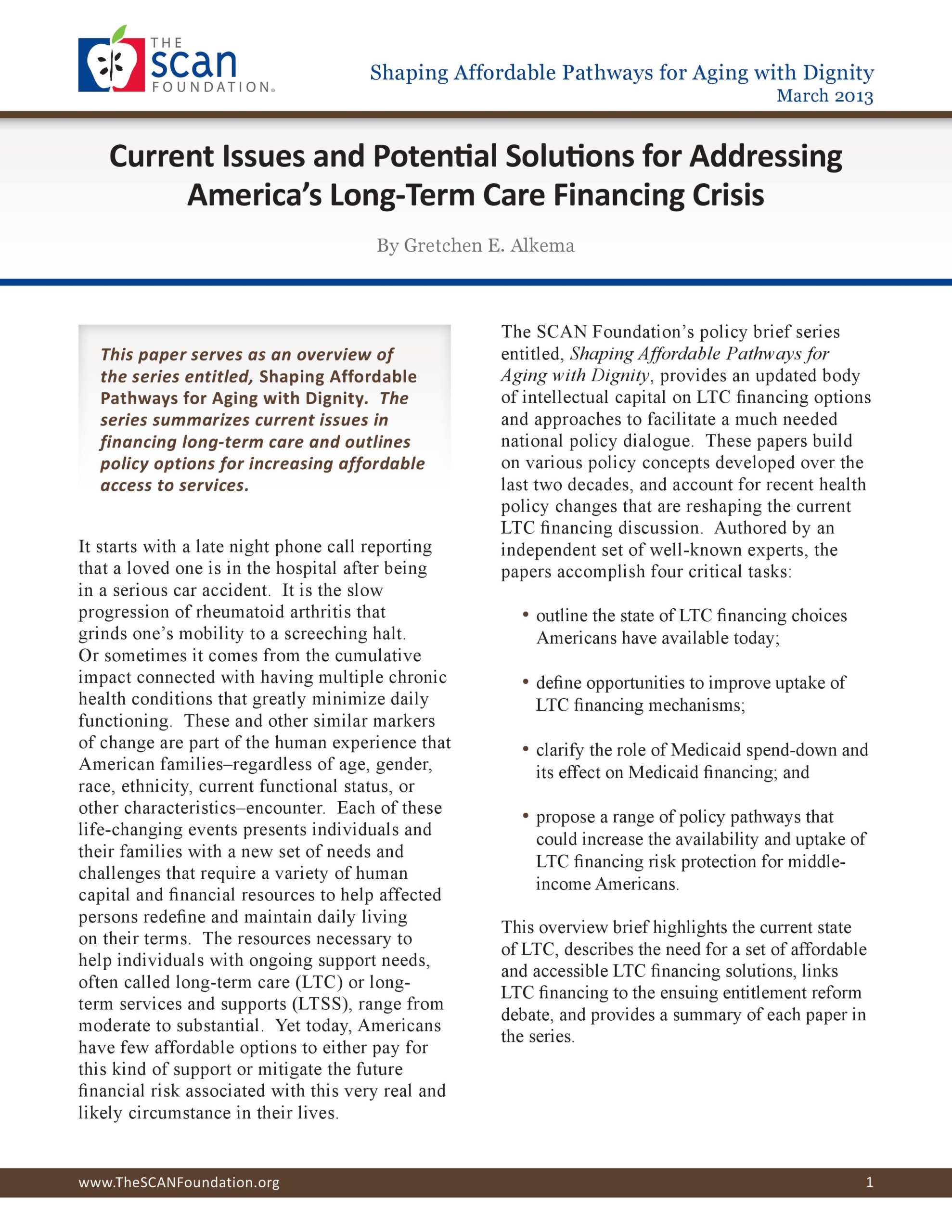Current Issues and Potential Solutions for Addressing America’s Long-Term Care Financing Crisis
summary
This paper serves as an overview of the Shaping Affordable Pathways for Aging with Dignity series. The series summarizes current issues in financing long-term care and outlines policy options for increasing affordable access to services.
Date Updated: 03/20/2013It starts with a late night phone call reporting that a loved one is in the hospital after being in a serious car accident. It is the slow progression of rheumatoid arthritis that grinds one’s mobility to a screeching halt. Or sometimes it comes from the cumulative impact connected with having multiple chronic health conditions that greatly minimize daily functioning. These and other similar markers of change are part of the human experience that American families–regardless of age, gender, race, ethnicity, current functional status, or other characteristics–encounter. Each of these life-changing events presents individuals and their families with a new set of needs and challenges that require a variety of human capital and financial resources to help affected persons redefine and maintain daily living on their terms. The resources necessary to help individuals with ongoing support needs, often called long-term care (LTC) or longterm services and supports (LTSS), range from moderate to substantial. Yet today, Americans have few affordable options to either pay for this kind of support or mitigate the future financial risk associated with this very real and likely circumstance in their lives…
Download the publication for all visuals and complete references.
Continue Reading
This policy brief provides background on the historical development of benefit eligibility triggers in the private long-term care insurance market. Understanding how these triggers came into being can provide important information to those charged with implementing the CLASS Plan.
This policy brief provides information about how long-term care insurers implement benefit eligibility triggers in the private insurance market. The way in which companies have operationalized benefit eligibility triggers can inform the development of regulations for the CLASS Plan.
This policy brief provides information on the benefit eligibility assessment process in the private long-term care insurance industry. It focuses on how long-term care insurers use the information in the adjudication process, who is involved in the process, and how activities of daily living and cognition are assessed.


